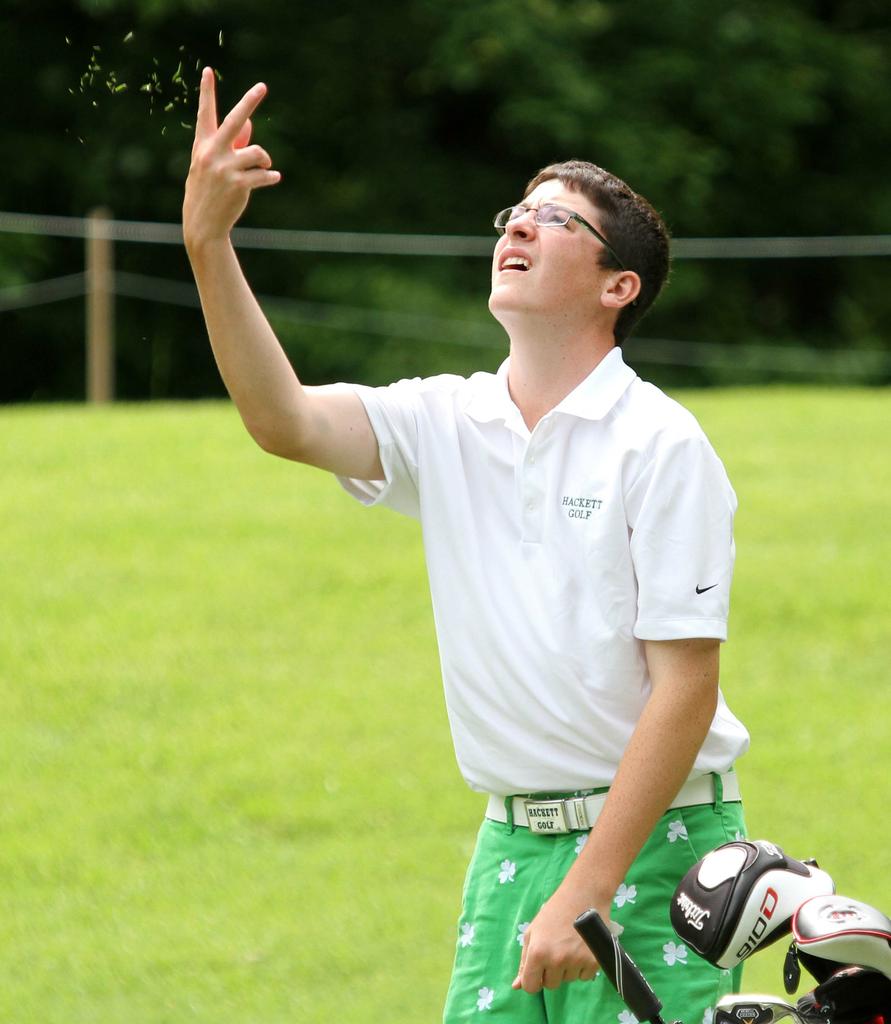To analyze the performance of the golf balls we sell at Lost Golf Balls, we collected two sets of data for comparison. First, we compared driver distance off the tee between our recycled golf balls and brand new ones. Second, we tested this same relationship when hitting off the ground using a seven-iron.
 For the driver, we used the 10.5 degree version of the Taylor Made® R9™. The club head had a 59° lie angle and a 425 CC volume. The shaft was a regular flex Graphite Design. Total club length was 45 inches and it had a D4 swing weight. The seven-iron was a Ping® G20™. It had a CFS Stiff flex shaft with 2.1 degrees of torque and a total weight of 109 grams.
For the driver, we used the 10.5 degree version of the Taylor Made® R9™. The club head had a 59° lie angle and a 425 CC volume. The shaft was a regular flex Graphite Design. Total club length was 45 inches and it had a D4 swing weight. The seven-iron was a Ping® G20™. It had a CFS Stiff flex shaft with 2.1 degrees of torque and a total weight of 109 grams.
The tests, done at an industry-leading, independent research facility, used a Robotic Golf Swing Device to deliver consistent and reliable club head contact and a TrackMan® Launch monitor to accurately and precisely measure the results. The robotic machine was set to 95 mph for the driver and 83 mph for the seven-iron, both research-backed averages.
Done over a two-day period in San Diego, California, weather conditions varied slightly during the testing. Day one had a temperature between 62 and 64°F and a humidity that ranged from 63-78% with a Barometric pressure of 29.99. Wind speed was between nil and 9 mph and all shots were taken directly into it.
Day two was almost exactly the same, but had a slightly higher temperature (65-66°F), humidity from 68-71% and 0.05 increase in Barometric pressure. Its main difference was an increase in wind speed from day one. It ranged from 4-14 mph.
Eight of our best-selling models of golf ball, both 5A and 4A, were tested ten times each against their out-of-the box counterpart. A different ball of the same model was used each time during the ten swings. The highest and lowest of the ten were dropped and an average was taken from the results.
 For most golfers there is a 10 yard distance gap between each iron, just due to the difference in degrees of loft. There is a term that gets used often to describe how one should counter-balance the wind while playing and it’s called a “Club Wind”. For every 10mph the wind is blowing against you, means you need to take another club. So if you hit your 7 iron 150 yards and you have a 10mph head wind, you need to take a 6 iron out to make sure you can carry the ball the correct distance. The same principle applies when the wind is at your back.
For most golfers there is a 10 yard distance gap between each iron, just due to the difference in degrees of loft. There is a term that gets used often to describe how one should counter-balance the wind while playing and it’s called a “Club Wind”. For every 10mph the wind is blowing against you, means you need to take another club. So if you hit your 7 iron 150 yards and you have a 10mph head wind, you need to take a 6 iron out to make sure you can carry the ball the correct distance. The same principle applies when the wind is at your back.
The wind, measured only at the point of impact, was then factored into the yardage. For testing purposes and to simplify comparison, we gave each mile per hour of wind a factor of 1 yard of distance. For example, a ball hit an average of 200 yards into an average wind speed of 4 mph would be given a yardage total of 204 yards. While this is not a fact and just simply a tool we used in our measurement, we feel it’s very close to real world conditions.
After all testing was done, the overall yardage difference between brand new and Lost Golf Balls’ recycled golf balls was almost negligible. Our 4A-rated balls, regardless of wind, tested 3 yards less than new. The difference using our 5A was even less. Without the wind factor, the overall difference in combined yardage was 1 yard, with the brand new ones traveling 3 feet farther. With the wind factor, the yardage was exactly the same.
Keep in mind, too, that these are only averages. Some of our recycled golf balls had slightly more distance, some had slightly less. In the end, though, it is our conclusion that, based on an independent study done at an industry-leading testing facility using advanced measuring equipment, there is little to no difference between brand new, out-of-the box golf balls and the recycled ones we sell at Lost Golf Balls.
We take pride in every single golf ball we send to our fellow golfers . We put that pride to the test and we passed. Now you can have that same confidence and enjoy the value of performance without compromise that only Lost Golf Balls can deliver.



